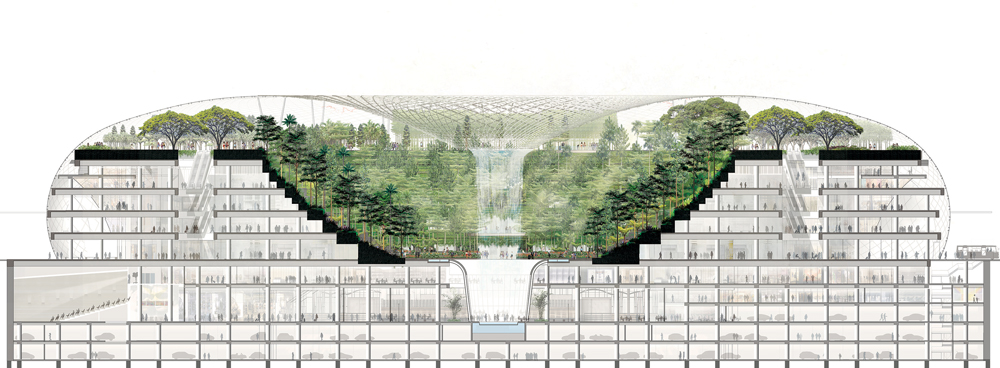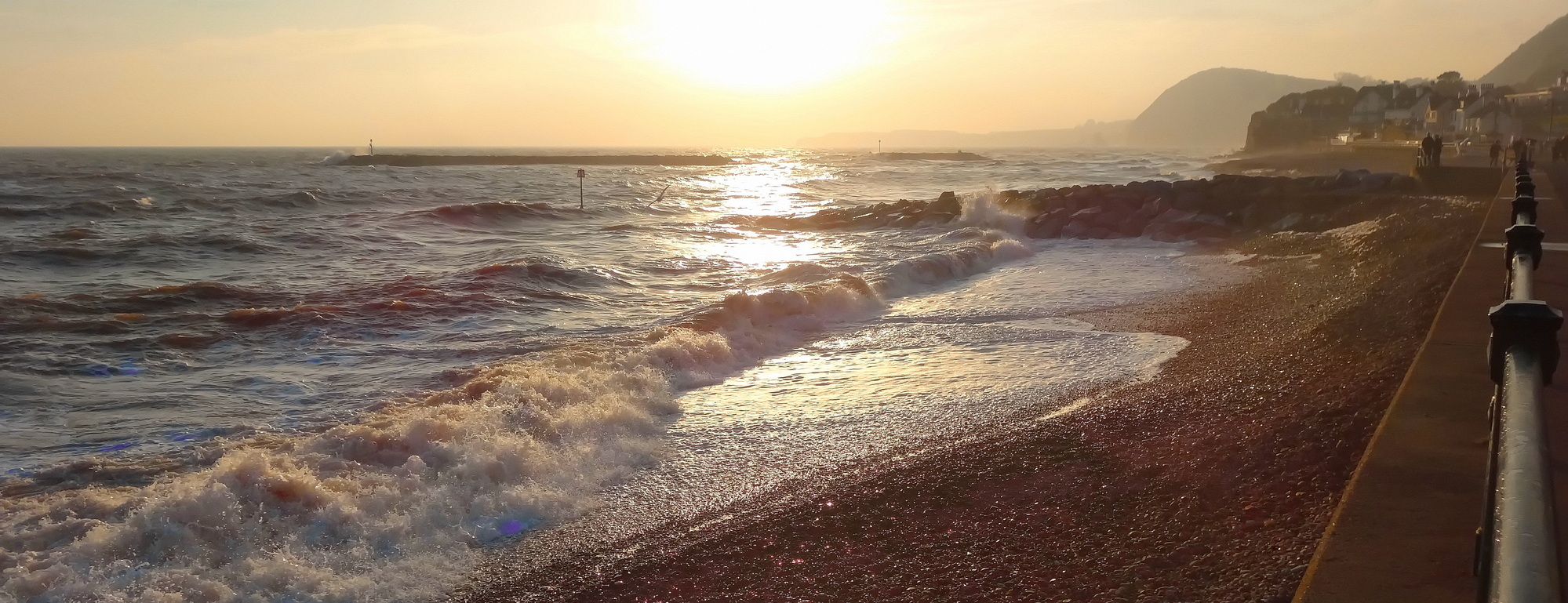Singapore’s refurbished Changi Airport now features the world’s tallest indoor waterfall… Known as the ‘City in a Garden’, Singapore is already famous for its Gardens by the Bay, which contain a grove of human-made ‘super trees’ that actually mimic the processes of photosynthesis and rainwater collection through the use of photovoltaic cells, which convert sunlight into energy. In this sense such innovations fit more broadly into what is known as ‘biomimicry’, or the process by which scientists, architects and others imitate natural processes as a solution to human-centred dilemmas or inventions. Architecture is at the forefront of this movement.

STRUCTURE magazine | Engineering an Icon
But while such imitation is generally viewed favourably, it also suggests that for nature to be viable and appreciated in our digital age it must merge with the technical worlds of machinery and architecture. What we are witnessing is a fusion of the Anthropocene, a new geological era defined by human actions, and scenery, an anthroposcenery, in which nature, ever more unpredictable in the wake of human-driven climate change, is transformed and repackaged as heavily choreographed scenery for the ‘well-being’ of humans inhabiting the cityscape.
The New Anthroposcenery – Arena
“At the apex of Jewel’s glass roof is an oculus that showers water down to the center of the building. The Rain Vortex will be the world’s tallest indoor waterfall, transforming into a light and sound show in the evening. Additionally, rainwater is funneled into the waterfall and harvested for building services and landscape irrigation systems. At peak conditions, water will flow through the oculus at more than 10,000 gallons per minute.”
Solarpunk architecture at the Singapore airport : solarpunk
Jewel Changi Airport – YouTube
Jewel Changi Airport – Buro Happold
The current surge in ‘green buildings’ grows out of the solarpunk movement, whose vision promotes a nature interwoven through metallic cityscapes, endorsing a chimerical city that brings the best of nature to the city and gives the metropolis a green makeover. Solarpunks are much more optimistic (if not dangerously utopian) about the future than, say, cyberpunks. One of the aims of the solarpunk movement, it seems, is to keep the dystopian cityscapes of Blade Runner and The Fifth Element at bay. The worlds depicted in those films were unapologetic in their abandonment of wilderness in favour of unending metallic fortresses, bleak yet visually striking. In Cinema and Landscape, Christina Kennedy and colleagues write that The Fifth Element was ‘an extension of the stereotypical city of today: a thoroughly complex and artificial environment, that maybe even despite all of its problems, can be stunningly beautiful’. Both films feature characters cut off from nature, a feature that we, the audience, are to view with concern. An antidote to this abundance of steel is now given in the form of the ‘sustainable city’, or the ‘green city’, a hybrid creation that is meant to function as a well-oiled ecosystem.
Tim Beatley envisions what he calls ‘biophilic cities’, arguing that in the endeavour to green our cities, planners focus on everything but nature. His view emphasises nature: ‘Biophilic Cities acknowledge the importance of daily contact with nature as an element of a meaningful urban life, as well as the ethical responsibility that cities have to conserve global nature as shared habitat for non-human life and people’. Beatley’s sentiments carry a distinctly Romantic feel in their plea to humans to harness a ‘meaningful’ relationship with nature. He writes that because humans ‘coevolved with the natural world’, cities need to make room for green spaces and make daily interactions with nature possible, but while we may have coevolved with the natural world and other animals, that evolutionary trajectory has long since deviated into destruction and self-idolatry.
